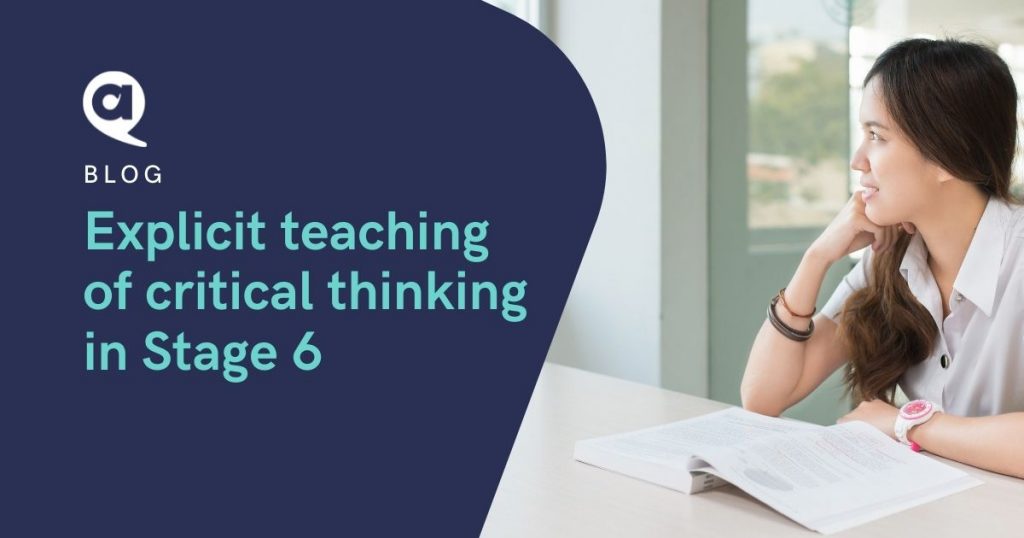
Critical thinking and analysis are essential for Stage 6 students. But they are not skills students learn alone. Here’s how to nurture them.
Critical thinking and analysis are key skills. Students must understand how to apply them, as they are specifically referred to in the exam rubric for Section II of the HSC exam.
Students need to question current understanding, examine issues from a range of perspectives and evaluate beliefs and opinions over time [page 12 syllabus]
What is critical thinking?
Critical thinking is about analysing and evaluating information – responding to information critically, logically and rationally rather than just accepting information as truth or fact.
Let’s unpack this a little. If we take a look at the glossary of terms we can see that:
- ANALYSIS is about components and their relationships and the implications of these relationships.
- EVALUATE is making judgements using a specified criteria.
- SYNTHESIS is being responsive to information. Specifically, taking information we know as true in one context or situation, and being able to transfer or apply it to another context or situation.
It doesn’t come naturally
Critical thinking and analytical skills are not something students can learn just by hearing about them.
The cognitive skills involve learning how, not just learning what. It’s not possible to develop effective thinkers by relying on didactic teaching methods, in which students are seen as passive recipients of the knowledge passed down by the teacher.
Students need to be given experiences in which they are required to use them. These experiences need to be regular.
Nurture thinking
So how can you develop critical thinking skills with your class? By nurturing a class of critical thinkers.
To do this you need to be promoting and supporting deep, inquisitive and critical conversations.
Effective strategies for practising and developing critical thinking skills are conversations and activities that require students to:
- make judgments about information or
- create arguments which they then must justify through logical and rational debate.
Teachers may need to re-think the teaching of the Stage 6 course, as it will take time to do this effectively with your class.
The Flipped classroom
The Flipped classroom can be an effective approach. Rather than lessons being devoted to getting a handle on “the what”, students access and engage with the “knowledge part” of the learning (or “the what”) before coming to class.
This can be done through either engaging with textbook content, undertaking personal research, reading articles or viewing a YouTube video.
Your lessons allow for questions and clarification about the preparation work at the beginning. The bulk of the lesson can then be devoted to the facilitation of deep conversations and robust debates and other activities that require students to think critically.
Key steps
From my reading, I think these are the key steps to developing critical thinking skills.
Students need to:
- know what questions to ask in order to critique or interrogate information.
- be able to develop arguments and justify the logic within their arguments.
You can support students to undertake these two steps by building them into the processes you use to summarise learning.
Useful template
Download this template to support students to ask the right questions in order to unpack the syllabus content and develop logical arguments.
Author: Janice Atkin, Professional Learning Officer, ACHPER NSW
11 November 2021


